10 Easy Brain-Based Learning Strategies for Student Success

Creativity, structure, and emotional connection are the cornerstones of effective teaching. These elements create a supportive environment where students thrive. Brain-based learning provides a framework to weave these elements seamlessly into teaching practice. By understanding how the brain works and applying research-backed strategies, educators can unlock student potential in ways that are innovative, impactful, and enduring.
- Creativity ignites curiosity. It helps students think outside the box, connect with lessons in fresh ways, and explore new ideas. Through art, storytelling, and hands-on projects, creativity transforms learning into an engaging and memorable experience.
- Structure creates clarity. A well-organised classroom fosters focus and productivity. Clear schedules, routines, and purposeful organisation provide students with the stability they need to succeed. Structure isn’t rigid. It’s the foundation that allows learning to flourish.
- Emotional connection builds resilience. It empowers students to navigate challenges with confidence and empathy. By fostering emotional intelligence, self-awareness, and a sense of belonging, teachers prepare students not just for academic success but for life itself.
Brain-based Learning Strategies
This guide presents 10 brain-based learning strategies to help educators integrate creativity, structure, and emotional connection in their classrooms. Using the acronym “BRAIN-BASED,” we explore:
- Brain time clock
- Repetition
- Active learning
- Images
- Novelty
- Be colourful
- Auto learning
- Social brain
- Elicit emotions
- Develop thinking
Each brain-based learning strategy is divided into three parts
- A description of the strategy.
- Practical ways to implement it in your teaching practice.
- Specific applications to foster creativity, organisation, and emotional growth.
These strategies are not about reinventing the wheel but enhancing what teachers already do so well. Whether you’re looking to refresh your teaching methods, deepen your connection with students, or simply bring a fresh perspective to your classroom, this guide offers a flexible, proven approach to create a space where learning comes alive and every student feels inspired to succeed.

Strategy 1 – Brain Time Clock
a) What’s a brain time clock?
We’ve all been there before. After a long day of work or learning, we feel burnt out, tired and fatigued – even if the day is comprised of sitting in the office. Our students experience this too, after long school days.
But why does this mental and physical fatigue happen even when students are seated quietly at desks, with little to no physical exertion?
An ultradian rhythm is a recurring cycle repeated throughout the 24-hour day, closely linked to circadian rhythms that influence our sleep cycles based on the natural environment around us.
Ultradian rhythms, unlike circadian rhythms which cycle once a day, cycle much more rapidly – once about every 90 to 120 minutes! They influence attention, interest, cognition, memory, visual perceptions, moods, and behaviour.
So if students are passively learning for hours on end, their ultradian rhythms are being worn out. The expectation that they be at attention and engaged in passive or lecture learning is simply counterintuitive to how the brain works.
How can you harness students’ ultradian rhythms to effectively implement brain-based learning?
b) Harnessing your students’ brain time clock
It is recommended that passive learning be taught for no more than 12 to 15 minutes at a time, and be varied properly with instructional learning. For example, lecturing for 12 to 15 minutes is okay – but hours on end will tire students. In the meantime, instructional learning can be used to engage students in step-by-step or hands-on material.
Since ultradian rhythms cycle once every 90 to 120 minutes, another important aspect of nurturing the brain’s “time clock” is to fully unplug in that same time. This means pausing both instructional and passive learning and invigorating the brain with physical or creative activities.
“Unplugging,” however, doesn’t include allowing for time with electronics. Students shouldn’t be checking their phones during these breaks, but should aim for an activity that engages them both physically and mentally. Using a phone, laptop, tablet or other electronic device can derail the 90 to 120-minute break.
Ultimately, students are humans. Humans are living beings. We function in cycles, like how birds fly south for the winter, or how whales swim across the world’s oceans with their young.
On a much smaller scale, implementing an understanding of ultradian rhythms in the classroom is one way that the human brain — and body — can become functional parts of the learning process, without brain fatigue or “burnout.”
c) Harnessing Rhythms for Creative and Organised Learning
To enhance the application of the ‘Brain Time Clock’ strategy in your teaching, consider incorporating elements of art and social-emotional learning (SEL). During optimal brain times, engage students in art projects that relate to the content being taught, allowing them to express their learning creatively and visually.
For example, you could start the day by introducing a collaborative mosaic project where students add tiles that represent key ideas from the lesson. Or end the day with a ten minute photography session where students photograph their artwork and upload it to a digital portfolio art gallery for students like Artsonia. During natural dips in focus, facilitate an SEL activity like a “reflective sketching break” where students draw freely to reflect their emotions or thoughts.
These activities balance cognitive engagement with emotional and creative expression, ensuring students remain productive and supported throughout the day.
This not only taps into their peak cognitive states but also supports emotional engagement, which is critical for deep learning. By recognising and adapting to the emotional states that these rhythms influence, educators can create a classroom atmosphere that respects and responds to the diverse needs of students. This promotes a more inclusive and supportive learning environment.
Looking for an easy way to incorporate creativity during optimal brain times? Download our FREE Mandala Designs and Colourwheel Emotions to engage your students in mindful, artistic breaks that promote focus and emotional expression.

Strategy 2 – Repetition
a) Repetition is a tricky game to play
You don’t want to repeat material until it becomes redundant and boring, distracting student attention and productivity. However, it is also unlikely that a student will learn the content once and be able to accurately and fully remember that information forever, or even until the exam.
Successful repetition of information can be done in different ways in order to strengthen connections in the brain. In fact, the brain remembers information best when it is repeated in multiple ways. In presenting the information in multiple ways, the medium of the presentation is important. Video, images, charts and infographics are all productive mediums for repetition.
If information is shown in a video, then in text and images, in analytical charts, students will have different methods of grasping the information. Their brains will also be reinforcing the information by strengthening connections.
Rehearsal of information increases retention since the brain rarely understands information the first time it encounters it. As Educators, we can improve this rehearsal by scheduling how the material is presented.
By lengthening the intervals in which information is presented, students are actively made to recall key information on the spot.
b) Schedule Repetition of Information
This presentation should happen at gradually lengthening intervals, to further exercise and reinforce brain connections. Properly spacing out the priming, reviewing, and revising periods is a good method to promote the beneficial practice of repetition.
- Pre-exposure: By providing preliminary information about the topic in advance, students can prepare for the content and begin to make inferences. Something as simple as providing a syllabus can begin pre-exposure!
- Previewing: An overview of the information at the beginning of the lesson will introduce the student to the information, without overloading them. The preview should be clear and concise.
- Priming: This is the primary lesson, or the direct teaching of information. This is where more detail, nuances and facts are provided in the information.
- Reviewing: Now that the lesson has been covered, coming back and repeating the information becomes essential. Reviewing can be for an exam or assessment, especially to present the informative details taught beyond the initial overview.
- Revising: After the lesson has been taught, educators should occasionally check that the students have learned the material correctly, and for the long term.
c) Reinforcing Repetition Through Creativity and Reflection
Integrating art can make the review process more engaging and memorable as you implement repetition strategies.
Encourage students to create visual representations of their learning through repetitive art activities, such as drawing key concepts multiple times or building models that represent learned theories. Or have students create flashcards with illustrations for key concepts and then use them in a peer-teaching exercise where they explain the ideas to a partner. This method helps solidify knowledge through active creation.
Incorporating SEL by discussing how the repetition of these activities makes students feel (whether empowered, frustrated, or something else), can help teachers tailor sessions to better support each student’s learning journey. Or end the activity with a reflective journaling prompt: “How did repeating this activity in different ways help you feel more confident in your understanding?”
When students share their thoughts on the challenges and rewards of repetition, it turns moments of frustration into opportunities for growth and resilience. This approach fosters both mastery of the content and self-awareness, creating a deeper connection to the learning process.
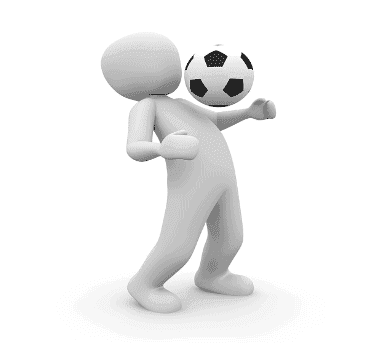
Strategy 3 – Active Learning
a) Engage students in active learning
Contrary to the thought that learning is only a mental process, students who engage in physical activity while learning can strengthen their mental performance.
Educators who push students to be active in the classroom aren’t just improving physical health – they’re adding sensory stimuli that can improve students’ memory and retrieval while reinforcing information. It’s a very intuitive fact that students who have healthy bodies will do better in the classroom. If a student is well-fed with a balanced diet and is not sick, they will have a better attention span and will participate more in class.
However, physical fitness classes once every few days simply aren’t enough. It is recommended that people should try to get anywhere between 60 minutes and 120 minutes of physical activity a day. Spending an hour to two, being active can seem like a difficult feat when students are spending the majority of their days in the classroom or doing homework.
So how can introducing active learning in the classroom improve student success?
b) Physical active learning improves student success
When Sensory Stimuli are added, they raise blood pressure and levels of epinephrine (also known as adrenaline). This can reduce drowsiness and restlessness while also reinforcing information.
Engaging in physical performance in the classroom can take on many forms: role play, acting, energising discussions, and games that make the students get up from their seats are all part of brain-based learning.
Getting students outside the classroom is important too. If a lesson can be taught outdoors or has applications to the natural world, students can benefit from the novelty of a different environment. In the natural light, they also will be producing more vitamin D, which can help improve brain function.
Active learning can be especially beneficial for students with learning disabilities such as ADHD who experience hyperactivity and have difficulty paying attention.
Furthermore, adding the dynamic change of physical movement to the classroom can be tied into repetition. It can be yet another way to present information in a lesson.
c) Energising Active Learning with Movement and Creativity
Involving students in group art projects related to the subjects being actively learned, fosters not only creativity but also collaboration among students. Ask students to physically create a three-dimensional model of a concept, such as constructing a “brain map” using clay to represent different brain functions.
These activities can help students visualise and internalise the concepts being taught, making abstract ideas more concrete and understandable.
Encourage students to present their projects to peers, with a SEL circle discussion where students share how working collaboratively on the model made them feel or what they learned from their peers during the process.
This peer-teaching element reinforces their understanding and fosters collaborative learning. By creating an SEL-focused environment where students reflect on and discuss their emotional responses to these activities, you promote empathy and emotional intelligence, which are key components of a supportive and engaging learning community.
Take your active learning outdoors or into hands-on activities with our Exploring the Stars graphic organiser. A perfect way to help students visualise and connect to celestial concepts creatively.
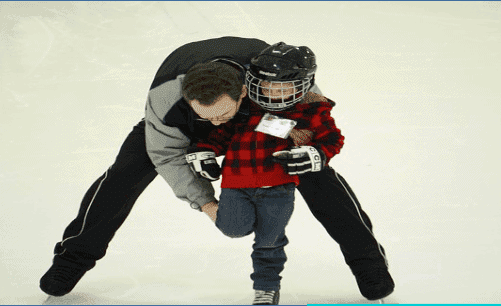
Strategy 4 – Images
a) Visual Images the easiest way to gain long-term memory
Our eyes are our windows to the world. Of all the information that the brain absorbs, about 80 – 90% of it is visual, through our eyes.
Humans are extremely receptive to visual cues and visual memories with faster recall more than any other form of stimuli, be it auditory, tactile, or something else.
Of the five human senses – taste, touch, sight, smell and sound — sight is how we observe the world around us and make sense of taste, touch, smell and sound.
For example, sight is how we know the food we are tasting is an apple, how we know that clothes are touching our skin, how we know that the horrible smell in the air is a nearby skunk, or how the music playing is coming from computer speakers. Sight is the most essential of the senses; without it, it is extremely difficult to navigate the world around us.
Based on this information, it is clear that adding visual imagery to the classroom is a massive part of brain-based learning. By showing students imagery-driven information, that information is stored in their long-term memory, which makes for faster and easier recall. Visual information helps make sense of the content and directs students’ attention to important information.
Incorporating images into learning is one of the easiest ways to engage brain-based learning in the classroom.
b) Use images in learning to engage learners
Handouts and text material can include graphics and diagrams, or pictures that demonstrate the text material. Infographics are also an effective way to explain information with visual cues since they typically formulate information into a conclusion.
Videos, especially shorter clips that reinforce a single topic, aren’t just fun for students to watch – they present one topic with changing stimuli, including sound, that activates students’ long-term memory.
Another way to activate visual memory is in the physical classroom itself. Not only does a bright and colorful classroom, fruitful with information, create a positive emotional environment for students by adding posters and pictures on the walls with relevant information or applicable imagery. But students will also absorb the world around them and process through memory and emotion.
Younger students may learn best by absorbing many images. Older students, who can make cohesive sense of images that tie into text or infographics, can benefit from making these connections from imagery to context. By reinforcing ideas from imagery to information, brain synapses are being reinforced likewise.
c) Visualising Concepts to Foster Connection and Growth
Enhance visual learning by assigning students to create an “emotion wheel” using colour and imagery to represent different feelings and their intensity.
They could pair this with key terms or topics from the lesson, such as illustrating emotions tied to historical events or characters in literature. By encouraging students to create visual representations of topics studied, you provide them with the opportunity to express their personal interpretations and emotional responses to the material.
Afterward, guide a group discussion where students explain their choices and reflect on how visualising these connections impacts their understanding. This process supports social-emotional development by fostering a sense of ownership and pride in their creations while building collaborative skills.
For instance, following discussions or explorations of new concepts, have students illustrate their thoughts or create visual projects that reflect their understanding and feelings about the lesson.
This activity integrates creativity with social and emotional reflection, reinforcing the role of imagery in learning.
Want to brighten your classroom and reinforce learning through visual aids? Download our FREE Dino Affirmation Posters to inspire creativity and confidence.

Strategy 5 – Novelty
a) Novelty of Info motivates students
Ever wonder why the newness of information adds that spark that enables students to succeed? The freshness of a new school year motivates students to work hard in the first few weeks but this motivation often drops off at some point in the semester.
Similarly, students may be motivated at the beginning of a new lesson to tackle the information with vigour but want to move on to the next lesson soon after. Ever wonder why the newness of information adds that spark that enables students to succeed?
When students see something new, the novelty of the information motivates them to learn more.
Why? The answer can be found in dopamine levels, the neurotransmitter linked to motivation—reward thought as well as pleasure.
When new information is presented, dopamine levels spike!
This is because the brain believes that the new stimuli have the potential to bring them a reward, so the person is more motivated to work for that reward.
b) New info is a motivational cue for the brain
For educators, it can be hard constantly to present the same information in new ways. However, creative applications to learning can create novelty around the content of a lesson.
New examples of material application, a surprise of new data or scenarios, or engaging students in unfamiliar situations to learn the content can all provide novelty.
The classic “field trip” can even play into brain-based learning. As seeing the lesson information in a real-world application outside of the classroom provides novelty to information.
New information is a motivational cue for the brain. Whether or not the student receives a tangible “award” for learning something, or not, does not factor into dopamine levels. A good grade or positive reinforcement from a teacher can be enough for students’ motivational levels to keep up.
In keeping information fresh and presented in creative ways, students will remain motivated throughout the lesson.
c) Inspiring Novelty through Art and SEL
Encouraging students to express new concepts through artistic projects (such as creating visual art, drama, or digital media), taps into their creative potentials and injects fresh dynamism into the learning process.
Use novelty to spark creativity and engagement by introducing an “unexpected art challenge.” For example, provide students with unconventional materials, like recycled objects or natural items from outside, to create a representation of a lesson concept.
Incorporating elements of social and emotional learning (SEL) by reflecting on the emotional impact of these new experiences can significantly enhance student engagement. Allow students to discuss or journal about how the new information makes them feel, what it taught them about adaptability, or what it inspires within them. This activity combines cognitive excitement with emotional awareness, capitalising on novelty to enhance retention.
Additionally, group projects with unexpected twists, such as surprise prompts or innovative challenges, can keep the novelty alive. This approach leverages the natural boosts in dopamine triggered by novelty while fostering a supportive environment where students feel valued and motivated to explore new challenges.
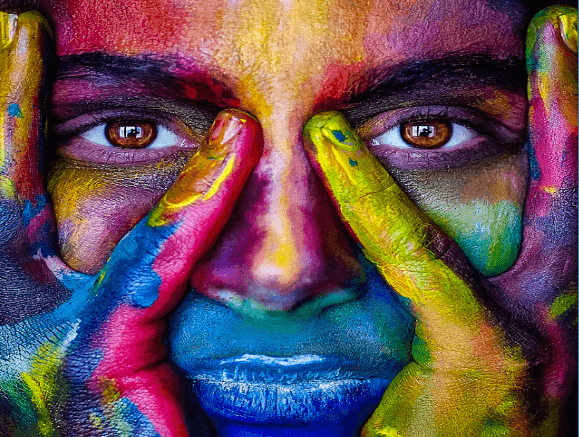
Strategy 6 – Be Colourful
a) Human brains love colour more than images without it
Colour has been linked to changing moods, improving creativity, and increasing concentration. In fact people remember colours better than plain images alone. Colour can improve comprehension of information as much as 73% in comparison to learning without colour cues. It can improve learning memory from 55% to 78%.
It’s been strongly proven that human brains love colour, even more than images alone. Plus different colours have different effects on the human brain.
It’s no surprise that new parents will paint their nursery walls in certain colours. Colour is a huge factor in how humans learn about the world. But just how colour affects us is a more recent discovery.
Different colours have different effects on the human brain. Yellow and pink can improve memory, while red can release excess energy, anger and adrenaline. Blue and green help students relax and increase their creativity, and blue has been proven the best colour for overall learning comprehension and retention.
b) Utilise colour in your classroom
Even if your classroom walls are stark white, adding colour through posters, pictures, bulletin boards and signs can improve the quantity and quality of images and information for students to absorb. But don’t overdo it!
- Yellow increases creativity, attention and positivity.
- Brown reduces fatigue and increases security.
- Green/Purple brings a sense of peace.
- Off-White improves attention and positive feelings.
- Red inspires alertness and creativity.
- Orange can improve alertness but don’t use too much.
These theories, called colour psychology, have also been implemented in marketing, art, and placebo experiments. However, the classroom is one of the most effective ways to utilise colour psychology.
Student success cannot be based entirely on colour alone, but introducing colour into the learning environment, handouts and even classroom lighting can effectively improve students’ memory and comprehension.
c) Infusing Colour for Creative and Emotional Expression
Incorporating a diverse palette into classroom activities can significantly enhance learning and emotional well-being. Encourage students to use different colours in their projects and assignments to explore the psychological impacts these hues have on their mood and cognitive functions.
For example have students explore the emotional impact of colour by creating “mood collages.” Provide magazines, coloured paper, and other materials, and ask students to assemble a collage that reflects how different colours make them feel. Connect this to the lesson by having them include words or phrases related to the topic, such as adjectives describing an historical figure or scientific process.
Facilitate SEL discussions about how certain colours make them feel or influence their work, deepening their self-awareness and emotional intelligence. For example, students could collaborate on a “mood mural” using colours that represent how they feel about specific topics or lessons. Such activities enrich the learning environment by blending colour theory with practical applications, making the classroom a vivid, emotionally responsive space that supports both academic and personal growth.
This activity ties emotional intelligence and creative expression to academic concepts, enriching both personal and cognitive growth.
Let colour transform your classroom! Download our FREE Mandala Designs and Colourwheel Emotions to help students explore creativity and emotional intelligence through vibrant art projects.
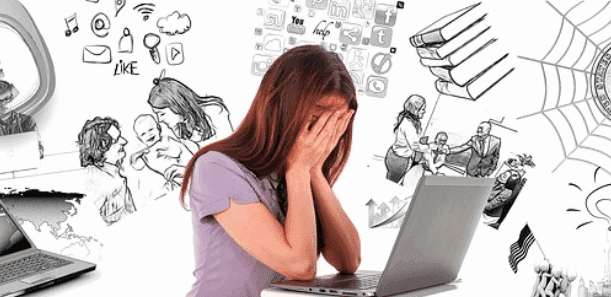
Strategy 7 – Automatic Learning
a) We create habits via automatic learning
The subconscious mind is one of the lesser-understood aspects of psychology. The parts of the mind of which one is not fully aware still affect and influence one’s actions and feelings.
They are difficult to identify and vary unpredictably from person to person. There are some parts, such as the ego, psyche, imagination, and self, that everyone has, and have the power to influence almost everything we do. Despite the lack of apparent existence, the subconscious mind is powerful, and it will influence learning as well.
Scientists believe that 95% of learning occurs in the subconscious mind – everything from habits to muscle memory to information we gather through non-verbal cues.
Automaticity is the ability to perform functions without occupying the conscious mind with low-level required details, often the product of repetitive or practice learning. Muscle memory and reflexes are part of automaticity, but so is fluency and literacy. We create habits through automaticity.
Since automaticity takes place in the subconscious mind, learning occurs there too. It can be difficult to figure out how to access your student’s subconscious minds to affect that 95% of learning. The best way to do this is through the learning environment. Be insightful to how varied materials can trigger subtle, subconscious aspects of your student’s experience.
b) Cortisol can trigger stress and harm learning
While a little bit of stress is necessary in the classroom to motivate students to do assignments and pay attention, higher amounts can negatively impact the learning experience. Students who experience uncomfortable to overwhelming levels of stress do not perform as well as their happier, less stressed peers.
So happy brains matter. Cortisol, a hormone that can trigger stress, harms thinking and learning. High levels of stress for long-term periods won’t just negatively impact a student’s classroom performance. This can lead to the onset of depression, anxiety, poor self-esteem, and further mental detriments.
Here, it is more important to note not so much what educators can add to the learning experience, but what they can take away. How can a teacher reduce the amount of stress in the physical classroom environment?
Loud noises, shouting, criticism and bullying, disruptive actions, and other triggers to stress can negatively affect students’ learning. Furthermore, a cluttered and disorganised classroom can lead to stress being triggered subconsciously. Whether it is the teacher or another student causing stress, the source should be reduced. That is effectively taken out of the setting.
Activating the subconscious mind is an important way that educators can utilise brain-based learning. Automaticity is reinforced by learning but learning is inhibited by stress. Knowing the psychology behind students’ triggers and blockades from success, is essential to tapping into their potential.
c) Building Habits with Creativity and Emotional Awareness
Art activities, such as drawing or sculpting, can help solidify new knowledge into the subconscious by engaging students in repetitive, creative tasks that enhance muscle memory and cognitive automation. These activities provide a stress-reducing outlet, supporting emotional well-being and reducing cortisol levels, which are crucial for creating a conducive learning environment.
Support automatic learning by incorporating repetitive, creative activities like designing patterned artwork that symbolises the day’s lesson. For example, students might create repetitive art forms like mosaics, calligraphy, or mandalas where each segment represents a new vocabulary word or scientific term they’ve learned.
Combine this with an SEL activity where students share how the process of repetition through art helped them internalise the material. By creating a classroom atmosphere that actively reduces stress and encourages positive emotional connections, educators can significantly improve the efficiency of automatic learning, ensuring that students not only learn more effectively but also feel supported and valued in their educational journey.
This dual-purpose exercise engages the subconscious mind while providing an emotionally calming outlet, reinforcing both learning and emotional well-being.
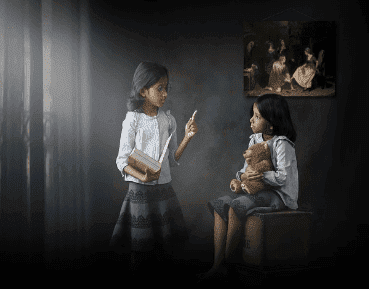
Strategy 8 – Social Brain
a) The brain craves social interaction
The brain is an inherently social organ. It develops better and learns more alongside other brains, especially in a social environment where people directly interact with one another. Like much of nature, humans are social beings. We need one another to learn, to develop and to survive.
The physical classroom environment leads to many opportunities for socialising within and outside of peer groups. Students who socialise can mature and develop their thinking skills at a faster rate than those who don’t. This doesn’t have much to do with being an introvert, someone who enjoys solace, or an extrovert, someone who thrives off of being social. Rather, humans take influence from one another’s behaviour both consciously and subconsciously.
People know that certain behaviour and actions are “good” and others are “bad” based on one another’s interpretations. Being social is essential to fitting in with society as much as it is to survival.
Learning through the social brain doesn’t simply take place in the classroom. In any instance where humans are interacting with each other, there is a social connection being made. The social brain prepares and develops humans for lifelong learning, no matter their age.
b) Social contact is best, face-to-face
It is important, however, that social contact takes place in person instead of over a screen. Even if two people are video chatting with each other, the interaction does not appease the social brain as well as if they were talking face to face.
This is why students who travel to countries where a different language from their own is spoken find that they pick up language faster and easier than learning it online, or from a book. “Immersion” is a social phenomenon, created by close human interaction.
Implementing social aspects into classroom interaction is easy, and can be a creative way for students to learn and also make friends. Group assignments, whether short in-class exercises or long-term projects are an effective way for students to learn socially together. Ideas and hypotheses can be bounced and vetted between students, contributing to social and intellectual development. Educators who utilise social learning can see a payoff in student success across the classroom.
Brain-based learning believes that cooperation is the best way for students to learn. What it doesn’t believe in is competition. That students pitted against one another will motivate each other. Often, competition does not motivate students, but in fact, can lower self-esteem as students compare themselves negatively to their peers. This deters motivation and productivity.
The cooperation and collaboration of social learning teaches students to, instead, be inspired by one another and learn positive traits socially!
c) Collaborating Creatively for Deeper Connections
Engaging in group art projects allows students to express their feelings and share personal insights in a collaborative environment, fostering empathy and respect for diverse perspectives. Social-emotional learning (SEL) techniques can be applied to guide these interactions, ensuring that all students feel included and valued.
Consider projects like creating a classroom mural, a classroom display, or a collaborative digital story. For example like a “community timeline mural” where students collaboratively depict key events from a historical lesson. Each student contributes a section and explains their part to the group. These activities allow students to contribute their unique perspectives while working towards a shared goal, fostering both teamwork and creativity.
Add an SEL dimension by facilitating a reflective discussion on how working as a team improved their understanding and strengthened connections with classmates. By discussing their artworks and the emotions they evoke, students deepen their social connections and enhance their communication skills, crucial for effective social learning.
Such practices not only align with the brain’s natural social inclinations but also cultivates a classroom culture that enhances both collaboration and knowledge retention.
Looking to foster social connections in your classroom? Try our FREE Video Diary Tools for SEL and EFL to encourage collaboration and reflective sharing among students.

Strategy 9 – Elicit Emotions
a) Emotions are essential to human well-being
Without emotions, humans would lose a trait that makes them inherently different from other animals. Experiencing a range of negative to positive emotions is important for healthy and proper human development so people can learn how to cope with negative emotions and sustain positive ones.
Controlling emotions can’t be taught in a classroom. It is something learned by intuition. Emotions don’t just control how we feel. They are also essential for attention, perception, memory and problem solving.
The amygdala, known as the emotional centre of the brain, controls all of these aspects of human feeling. The amygdala is most known for releasing chemicals that cause fear, but it does so much more. In fact, the amygdala doesn’t just control emotions, it controls how we perceive them as well.
When the amygdala finds that stimuli from the five senses has high emotional value, it considers those stimuli to be more important than others. Not only do these stimuli then trigger emotions, but learners can remember the stimuli easier than other information.
You can see how this can play into a classroom setting. Information that plays into causing emotions to occur is much more effectively remembered and learned by the brain than information that does not. These emotions can occur in any range, from negative to positive.
Not only will students learn the information. They will learn how to control and exhibit emotions. However, this doesn’t mean that all material should be taught melodramatically, or with unadulterated enthusiasm.
b) Elicit emotion through stories
Storytelling, depending on how the story is told, can evoke an infinite range of emotions. From excitement to despair, storytelling is an effective way to present information for optimal memorisation. That does not mean you need to start reading stories in all your lessons but if there’s an opportunity, use it.
For example, ‘The Cross With Us Rhinoceros’ by John Bush, is one of my all-time favourite stories. Watch it being read on YouTube. Lower primary kids enjoy the story as it is and upper primary kids pull apart the story to find the story elements. In middle school Art, you can use the story and images to grip students and motivate them to create a picture storybook for kids as a group or individually. It’s simple enough to grasp and get hold of quickly.
When a storytelling format is utilised in a classroom, the structure of a story makes sense to the hippocampus. The hippocampus is the part of the brain that forms new memories and is associated with learning and emotions. When a new informational stimulus is presented, the hippocampus is the first part of the brain to process it.
If stories are told structurally, this will help students compartmentalise and store the learned content. This doesn’t necessarily mean writing a story for your student. Following a storyline, however, can be effective. Starting with rising information that leads to a climax.
By tapping into different parts of the brain, eliciting emotions in brain-based learning can help students commit information to memory. Storytelling, through its structure and emotional value, can aid in this commitment.
c) Leveraging Emotions to Enhance Learning and Creativity
Artistic activities provide a powerful avenue for eliciting and exploring emotions in the classroom, enhancing the natural learning processes guided by the amygdala. Integrating art projects that require students to express emotional content, such as painting to music that evokes specific feelings, educators can deepen students’ emotional engagement and retention of information.
For example engage students emotionally by asking them to create “story paintings” inspired by the lesson. Or, after reading a story or learning about an event, students could paint scenes that represent the emotions they felt or imagine were felt by the characters involved.
Incorporate SEL practices by facilitating reflective discussions where students share the emotions their artwork conveys and how those emotions connect to the lesson. This helps students develop emotional intelligence and resilience, crucial for their overall well-being and academic success.
Such practices not only make learning more memorable by linking it to emotional stimuli but also support the development of a compassionate and empathetic classroom environment. This practice deepens understanding and develops emotional intelligence while embedding learning in an impactful way.
Deepen your students’ emotional awareness with our FREE Mandala Designs and Colourwheel Emotions an artistic way to connect learning with self-expression.
Strategy 10 – Develop Thinking Skills
a) Thinking through real-life problems
Every day, humans are presented with problems and decisions to make based on those problems. We learn for the future by trial and error, so we know how to make better decisions the next time around. Problem solving has to be developed through maturity and learning.
When a problem occurs, the brain needs to learn how to process it. It gathers information, conceptualizes the problem, imagines possible outcomes, and works towards the final solution. Education in a classroom is setting students up for the real world; shouldn’t they gain some sense of problem solving ability to prepare them?
By developing comprehensive thinking skills, students learn problem solving not just by answering questions on a test; they can apply these thinking skills outside of the classroom in real-world situations.
In helping students develop thinking skills, mimicking the real world is an effective way to place them in problem solving situations.
b) Use the six D’s to develop solutions
Giving students the freedom to learn, rather than a hyper-structured environment, allows them to encounter more problems and make more mistakes that can then be solved with thinking skills. In developing solutions, students should pay attention to what I like to call, the six D’s:
- Define the driving question or problem.
- Discover all aspects of the problem. What is the scope, nature and subject of the problem?
- Dream the approach to the solution. Brainstorming to imagine the problem being solved quickly and in the best way drives solution-making.
- Design the solution. By creating an instruction manual on how to solve the problem, students can access step-by-step thinking.
- Deliver the solution in a practical application. If the solution doesn’t work, try again.
- Debrief and review the outcome of the problem to learn from the experience.
Developing thinking skills is essential to student development. In older classes, where students are closer to the real world, making sure students can comprehend problem solving is critical to both their classroom and real-life success.
c) Fostering Thinking Skills Through Art and Reflection
Encouraging students to solve problems through artistic projects, such as designing solutions through sculpture. Or challenge students to solve problems creatively by designing “solution posters.” For instance, after discussing a real-world issue like ‘Save the Polar Bears’, students could create puppet movies or posters and bookmarks with ‘save the polar bear’ slogans.
Integrate social-emotional learning (SEL) into these activities by asking students to reflect on how they felt while brainstorming solutions and how their emotions might influence their decision-making. During SEL discussions, prompt students to explore how their solutions reflect values like fairness, empathy, or innovation.
This approach fosters both creative thinking and emotional intelligence, empowering students to handle complex situations with empathy and innovation. By combining art and SEL in problem-solving exercises, educators can provide students with a more holistic understanding of how to approach challenges, enhancing their ability to think critically and empathetically in both academic and real-world scenarios.
This activity blends critical thinking with emotional awareness, empowering students to approach problems holistically and empathetically.

The foundations and inspirations of this guide
This guide presents 10 brain-based learning strategies designed to foster creativity, organisation, and emotional growth in classrooms. The strategies are structured using Sara Hileman’s acronym B.R.A.I.N. B.A.S.E.D., first introduced in her article “Motivating Students Using Brain-Based Teaching Strategies“ (Hileman, S., 2006, The Agricultural Education Magazine, 78(4), 18-20). While Hileman’s framework provided the foundational structure for this guide, the content has been extensively developed and adapted to integrate insights from a range of other research and practical applications.
The strategies incorporate findings from the power and pitfalls of brain-based learning programs, psychology, and educational studies, including key studies on ultradian rhythms, emotional processing, and colour perception also informed the practical implementations described in each section. Additionally, Julie Schoen’s article on brain-based learning provides valuable perspectives on how these strategies can be applied to modern classrooms.
By blending this diverse body of research with actionable classroom applications, this guide offers a flexible, evidence-based framework for educators. Whether you’re seeking to deepen student engagement, enhance classroom organisation, or support emotional growth, these strategies aim to provide practical tools that align with both the art and science of teaching.
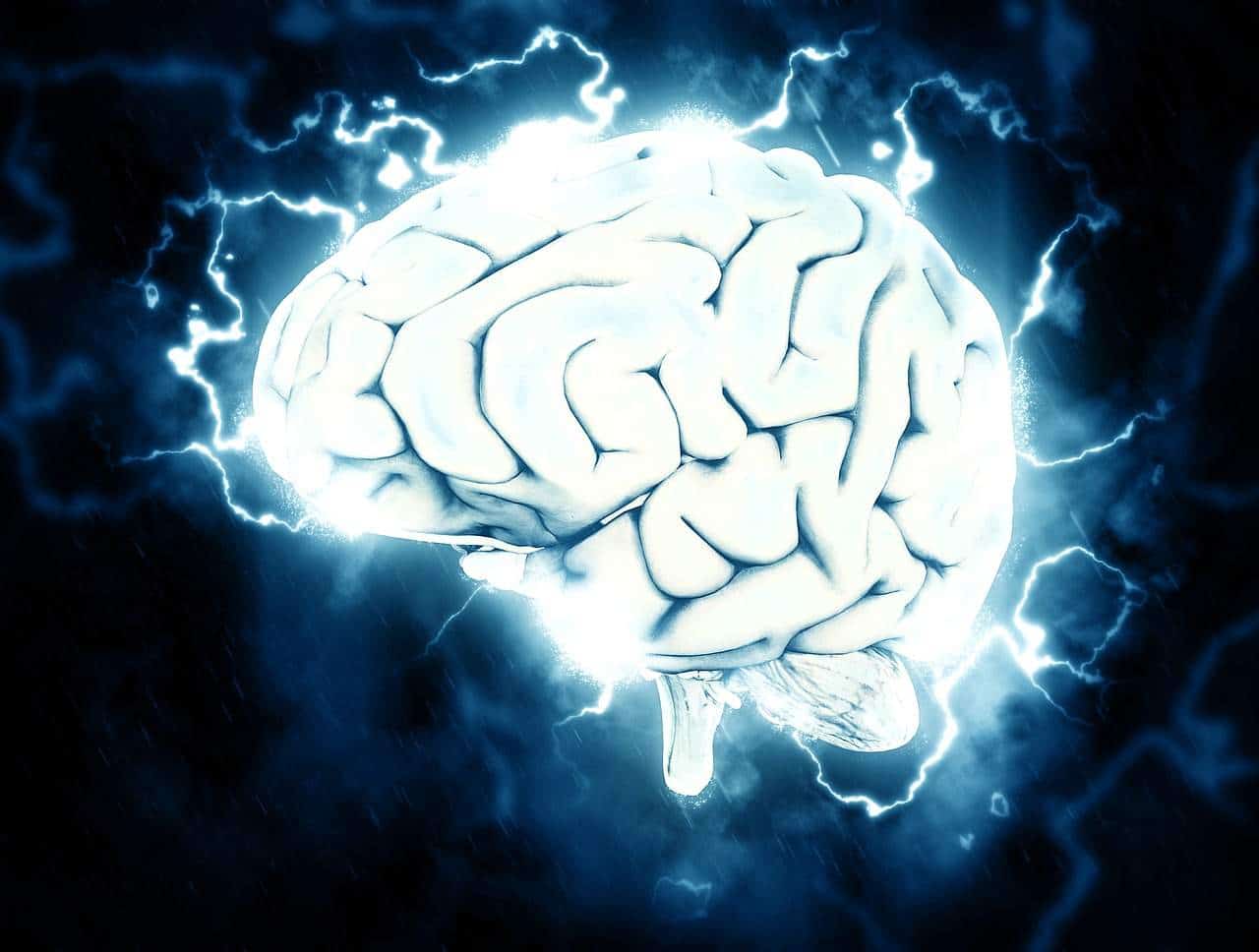
Empowering classrooms with creativity, organisation and emotional growth
In today’s fast-paced educational landscape, fostering creativity, structure, and emotional intelligence is more crucial than ever. By implementing these 10 strategies, rooted in the principles of brain-based learning, teachers can create classrooms that inspire curiosity, encourage collaboration, and support holistic development.
These strategies are not about reinventing the wheel but about enhancing existing practices with purposeful adjustments that engage students on multiple levels. Whether through vibrant art projects, well-organised schedules, or emotionally resonant discussions, these approaches empower educators to connect with their students in meaningful ways.
The beauty of this framework lies in its adaptability. It can be applied across traditional classrooms, online learning spaces, and even extracurricular activities. The integration of art and SEL enriches these strategies, ensuring that they resonate with the cognitive, creative, and emotional needs of all students. When classrooms are infused with thoughtful organisation, creativity, and emotional awareness, they become spaces where both teachers and students can thrive.
Brain-based learning, as explored through this lens, is as much an art as it is a science. It combines the insights of psychology, neurology, and educational practice to create environments that are vibrant, inclusive, and engaging. By leveraging the full potential of the human brain—through its creativity, adaptability, and emotional depth—educators are not only shaping better learners but also nurturing empathetic, resilient individuals.
It’s important to remember that meaningful change doesn’t happen overnight. The path to fully implementing these strategies requires patience, experimentation, and a commitment to understanding the unique needs of each student. Yet, the rewards are immense: classrooms where students feel valued, supported, and equipped to meet the challenges of a dynamic world.
Let this framework inspire you as you build a classroom that not only educates but also uplifts and empowers. Together, through creativity, structure, and emotional understanding, we can craft the next generation of learners and leaders who are prepared not just to succeed but to thrive in every aspect of their lives.
